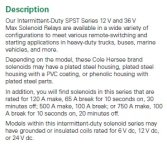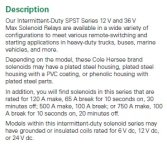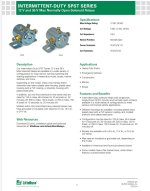My O-320 is a hard starter, particularly on the first start of the day (It's been in the low 80s around here recently and I still experience the issue). Respecting the 10 second duty cycle limit on my starter it typically takes two to three attempts to start. I've varied my technique and haven't found anything that works WRT boost pump timing, how many pumps of the accelerator pump while cranking, etc. I'm now annoyed enough with it to dig in and troubleshoot since technique change didn't do the trick.
Some background data: Carbureted O-320 with 10:1 pistons, two slick magnetos (one impulse coupled), Tempest fine wire plugs, no primer system, Skytec NL starter.
Working through the possible causes I've come up with the following, and would like advise on a course of action.
Air: Unlikely. Once the engine is started the EGT values show no signs of an intake leak, and the engine idles normally.
Fuel: The carburetor does not show signs of leaking or flooding, unless I just leave the boost pump on and the engine off, in which case eventually the bowl floods. I did ream the nozzle out for additional fuel flow, and this resulted in a flat band of mixture control when leaning. I don't think this would be the cause given the carburetor should be on the idle circuit at cranking RPMs.
Spark: This is the first place my mind goes. I have two slick magnetos with just over 200 hours on them. Both magnetos were installed with the distributor cap off and the locking pin inserted with the engine set to 25* BTDC. The one impulse coupled mag has a standard 25* lag coupling. After a couple test flights where I suspected detonation was occurring at high power settings, I retimed both magnetos to 20* BTDC. I did so by loosening the retention nuts and bumping them back 5* (I used new lock washers, of course). Assuming this also moved the impulse coupling timing, would the 5* ATDC cause starting issues? All spark plugs had good resistance values when tested at CI back in September.
Some background data: Carbureted O-320 with 10:1 pistons, two slick magnetos (one impulse coupled), Tempest fine wire plugs, no primer system, Skytec NL starter.
Working through the possible causes I've come up with the following, and would like advise on a course of action.
Air: Unlikely. Once the engine is started the EGT values show no signs of an intake leak, and the engine idles normally.
Fuel: The carburetor does not show signs of leaking or flooding, unless I just leave the boost pump on and the engine off, in which case eventually the bowl floods. I did ream the nozzle out for additional fuel flow, and this resulted in a flat band of mixture control when leaning. I don't think this would be the cause given the carburetor should be on the idle circuit at cranking RPMs.
Spark: This is the first place my mind goes. I have two slick magnetos with just over 200 hours on them. Both magnetos were installed with the distributor cap off and the locking pin inserted with the engine set to 25* BTDC. The one impulse coupled mag has a standard 25* lag coupling. After a couple test flights where I suspected detonation was occurring at high power settings, I retimed both magnetos to 20* BTDC. I did so by loosening the retention nuts and bumping them back 5* (I used new lock washers, of course). Assuming this also moved the impulse coupling timing, would the 5* ATDC cause starting issues? All spark plugs had good resistance values when tested at CI back in September.
Last edited:







